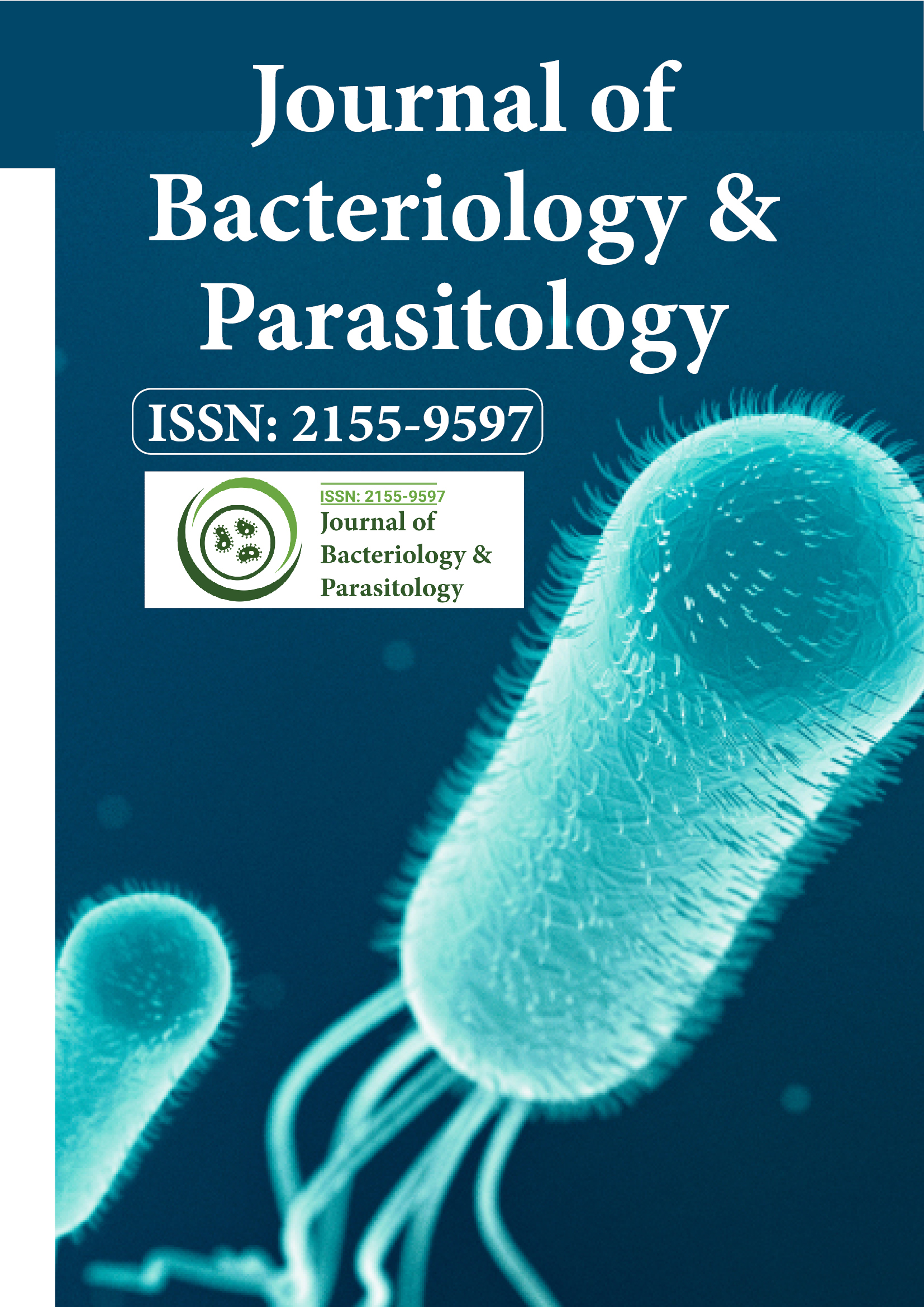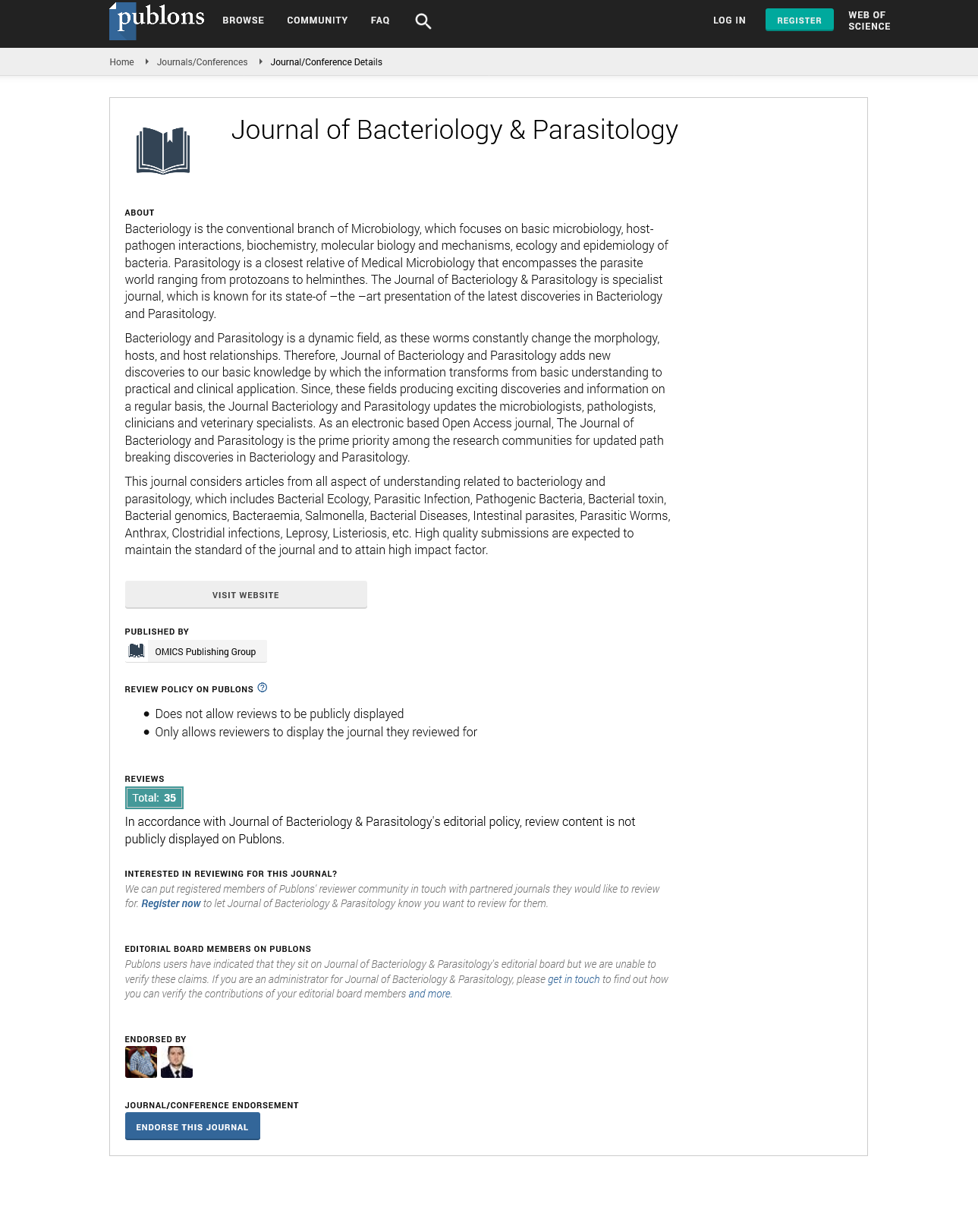Indexed In
- Open J Gate
- Genamics JournalSeek
- Academic Keys
- JournalTOCs
- ResearchBible
- Ulrich's Periodicals Directory
- Access to Global Online Research in Agriculture (AGORA)
- Electronic Journals Library
- RefSeek
- Hamdard University
- EBSCO A-Z
- OCLC- WorldCat
- SWB online catalog
- Virtual Library of Biology (vifabio)
- Publons
- MIAR
- Geneva Foundation for Medical Education and Research
- Euro Pub
- Google Scholar
Useful Links
Share This Page
Journal Flyer

Open Access Journals
- Agri and Aquaculture
- Biochemistry
- Bioinformatics & Systems Biology
- Business & Management
- Chemistry
- Clinical Sciences
- Engineering
- Food & Nutrition
- General Science
- Genetics & Molecular Biology
- Immunology & Microbiology
- Medical Sciences
- Neuroscience & Psychology
- Nursing & Health Care
- Pharmaceutical Sciences
Opinion Article - (2025) Volume 16, Issue 3
Bacterial Pathogens in Respiratory Tract Infections: Virulence, Spread and Control
Rakesh Menon*Received: 26-May-2025, Manuscript No. JBP-25-29941; Editor assigned: 28-May-2025, Pre QC No. JBP-25-29941; Reviewed: 11-Jun-2025, QC No. JBP-25-29941; Revised: 18-Jun-2025, Manuscript No. JBP-25-29941; Published: 25-Jun-2025, DOI: 10.35248/2155-9597.25.16.535
Description
The respiratory tract from nasal passages to alveoli is invaded by bacterial species that cause disease ranging from mild bronchitis to fatal pneumonia or systemic spread. Species such as Streptococcus pneumoniae, Haemophilus influenzae, Mycoplasma pneumoniae, Pseudomonas aeruginosa, Klebsiella pneumoniae feature in many cases. Each employs factors that allow adhesion to respiratory mucosa, evasion of local defense, dissemination, or toxin secretion.
Infection often begins when inhaled droplets or aspirated material introduce bacteria into upper airway or lungs. Adhesins on bacterial surface bind to receptor molecules on epithelial cells. Capsule polysaccharides in pneumoniae protect from engulfment by phagocytes. Some bacteria secrete enzymes that degrade mucus, or produce toxins that paralyze ciliary movement, reducing clearance. Biofilm on bronchial surfaces or within sinus cavities shelter bacteria from immune attack.
Immune defenses include mucociliary clearance, mucus trapping, antimicrobial peptides, alveolar macrophages, neutrophils. When these begin to fail due to smoking, pollution, coexisting illnesses like COPD or influenza pathogens gain foothold. Viral infections often predispose to secondary bacterial pneumonia by damaging epithelium and reducing mucosal defense.
Symptoms vary: Cough, sputum production, fever, chest pain, difficulty breathing. Distinction between bacterial and viral origin important to decide therapy. Imaging such as chest Xâ?ray or CT may show consolidation or infiltrates. Sputum culture or PCR helps identify species and resistance patterns. Rapid antigen detection or serology sometimes helpful.
Treatment includes appropriate antibiotics once pathogen identified or suspected. Empirical therapy guided by local prevalence and resistance. For resistant pneumoniae, high dose penicillin or cephalosporins may be used; macrolides in some regions; newer fluoroquinolones in resistant or severe cases. For Klebsiella that produce extended spectrum betaâ?lactamases, therapy with carbapenems or newer agents required. Supportive care with oxygen, fluids, ventilation if needed.
Prevention includes vaccination: Pneumococcal vaccines reduce incidence of invasive disease Haemophilus influenzae type b vaccine protects especially young children influenza vaccination reduces viral coâ?infection risk. General public health measures like reducing air pollution, discouraging smoking, improving housing ventilation.
Spread occurs via droplets, close contact, crowded settings. Hospital acquired pneumonia arises from ventilators, prolonged bed rest, or aspiration. Infection control measures in hospitals hand hygiene, respiratory precautions, sterilization of tools, cleaning surfaces reduce risk. Prompt identification and isolation of incoming cases with resistant strains prevent spread among patients.
Conclusion
Research continues on new antimicrobials effective against resistant respiratory pathogens, agents that disrupt biofilm formation in lung, immunomodulatory therapies to boost lung defenses, and vaccine improvements to cover more strains. Novel diagnostic tools that provide rapid identification in field settings help target therapy faster and reduce misuse of broad spectrum agents. Ultimately, reducing impact of respiratory bacterial infections depends on combination of host defenses, intelligent therapeutic choice, preventive strategies, and public health infrastructure. When these factors align, illness and mortality drop, particularly among children, elderly, and those with underlying disorders.
Citation: Menon R (2025). Bacterial Pathogens in Respiratory Tract Infections: Virulence, Spread and Control. J Bacteriol Parasitol. 16:535.
Copyright: © 2025 Menon R. This is an open-access article distributed under the terms of the Creative Commons Attribution License, which permits unrestricted use, distribution and reproduction in any medium, provided the original author and source are credited.

